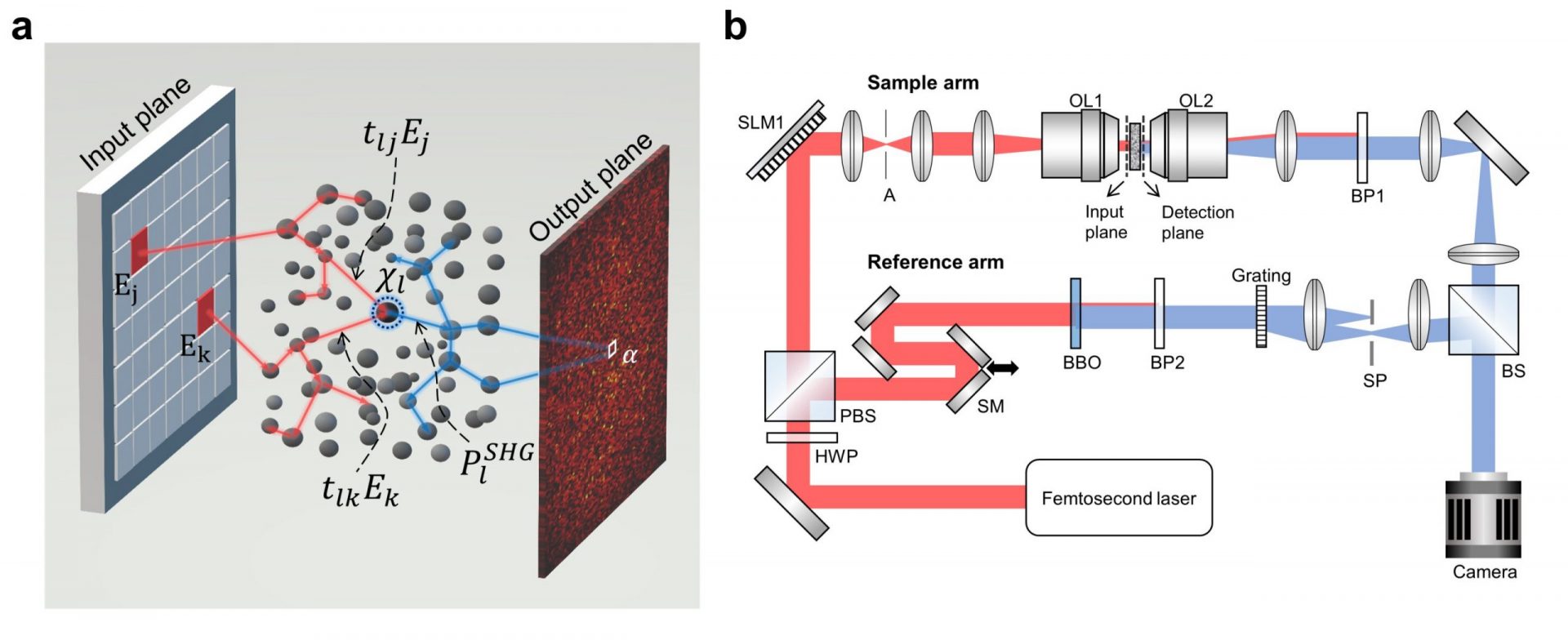Imagine being able to see through ground glass, a scattering medium that conventionally blocks light. It seems impossible, right? Well, Professor Choi Wonshik’s team from the IBS Center for Molecular Spectroscopy and Dynamics (IBS CMSD) has discovered a way to use this phenomenon in optical computing and machine learning. They have found a solution to the complex encryption that occurs when light travels through an opaque medium.
Previous studies have attempted to harness the information lost due to scattering media, like biological tissues, using mathematics. However, Professor Choi’s team has taken it a step further. They have combined hardware- and software-based adaptive optics to develop new types of microscopes that can see through highly opaque scattering media, such as mouse skulls, and perform deep 3D-imaging of tissues.
But things get even more interesting when nonlinearity comes into play. Nonlinear scattering media cannot be represented by a simple linear matrix, as the principle of superposition is violated. Professor Choi’s team has made a groundbreaking discovery in this area. They have found that the optical input-output response of a nonlinear scattering medium can be defined by a third-order tensor, rather than a linear matrix. This discovery has been published in the journal Nature Physics.
A third-order tensor is a mathematical object that represents relationships between three sets of data. It is an array of numbers arranged in a three-dimensional structure. Tensors are widely used in various fields to describe physical quantities and their relationships.
To demonstrate their findings, the team used barium titanate nanoparticles as a medium. These nanoparticles generate nonlinear second harmonic generation (SHG) signals, which disrupt the linear superposition principle. The researchers developed a novel theoretical framework involving cross-terms in a 3rd-order tensor to explain this phenomenon.
The team also showcased the real-world applications of their discovery. They demonstrated that nonlinear scattering media can be used for optical encryption, enhancing security compared to linear scattering media. They also implemented all-optical logic gates using digital phase conjugation, offering advantages such as reduced energy consumption and parallel processing capabilities.
This research has the potential to revolutionize optical computing and machine learning. Professor Choi and his team are currently exploring how their findings can be integrated into the field of all-optical machine learning.








